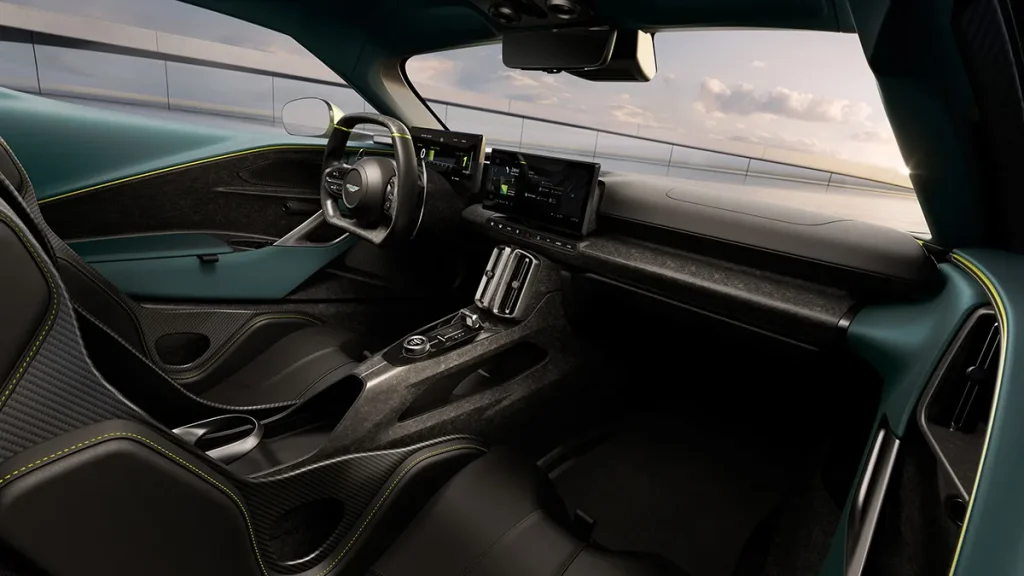It has taken its time, but the Aston Martin Valhalla has finally made it to the finished line.
The British marque just unveiled the production version of its eagerly anticipated plug-in hybrid supercar. The futuristic speed machine will launch as part of the automaker’s 2026 model class and is somehow more impressive than what was originally promised.
The Valhalla made its debut way back in 2019 in the guise of the AM-RB 03 concept. Five years is a significant chunk of time and it should come as no surprise that the supercar has evolved in that time, even since the production version was first teased in 2021. Sure, the finished version of the car may look about the same, but thanks to the help of the automaker’s Formula 1 team the hardware is different—and more powerful.

Image courtesy of Aston Martin
The big story with any supercar is bound to be the powertrain, and the Valhalla is no different. At the centre of the plug-in hybrid setup is a mid-mounted twin-turbocharged 4.0-litre V-8. It’s similar to the mill found in the DBX707 but has a flat-plane crank, dry-sump lubrication system, reworked pistons, and bespoke ignition system. Thanks to these changes the engine, which is mated to an eight-speed dual-clutch gearbox, makes 817 hp, which is 77 hp more than the brand said it was targeting in 2021.
That figure alone would make the Valhalla potent, but its powertrain also includes three electric motors, one more than was supposed to be present in 2021. Two of the motors are positioned on the front axle (which gives the car all-wheel drive) and the other is integrated into the transmission and acts as a starter generator. The trio gets its juice from a 6.0-kWh battery pack that can be recharged while decelerating. Thanks to the motors the vehicle can also operate in EV mode, in which it can cover 8.6 miles at speeds of up to 80 mph.

When the engine and all three motors are working together output comes to a combined 1,064 hp and 811 ft lbs of torque. The first figure is 127 hp more than the number quoted in 2021 (937 hp), meaning the powertrain is nearly 14 per cent more powerful than expected. Performance numbers remain the same, but it’s hard to imagine anyone complaining. Aston Martin says the Valhalla can rocket from zero to 62 mph in 2.5 seconds and reach a top speed of 217 mph.
That last number is helped by the Valhalla’s rather aggressive aero kit. The vehicle, as is increasingly common in its class, looks like a LMDh prototype racer with slightly cleaner, more attractive lines. It sits low to the ground, has a wide-mouth grille, sculpted curves, and an active rear wing that can elevate up to 10 inches up into the air. These elements combine to produce 1,323 pounds of downforce once you reach 149 mph, helping keep the car glued to the road. It’s also equipped with a set of forward-hinted dihedral doors that open up to reveal a surprisingly minimalist interior. The cabin lacks the flare of the exterior, but the flat-bottomed steering wheel and simplified digital screen setup are nice touches.

The Valhalla is a 2026 model and because of that it won’t go into production until the latter half of next year. The marque plans to build just 999 examples of its electrified supercar, which will likely sell quick. No final price has been announced, but it’s previously been speculated that it would cost between US$800,000 (approximately HK$6.21 million) and US$1 million (approximately HK$7.77 million).
Click here for more photos of the 2026 Aston Martin Valhalla.









